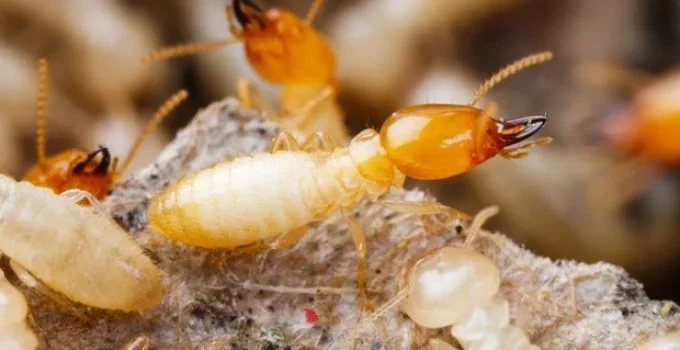How Long Do Termites Live?
Termites may be small, but some of them can live surprisingly long lives. The longevity of a termite depends heavily on its caste (worker, soldier, reproductive) and species (e.g., subterranean vs. drywood). While most termites live just a few months to a couple of years, queens can survive over a decade, quietly directing vast colonies from behind walls and soil.
Dive Deeper
- Termite Lifespan by Caste
- Species Differences in Longevity
- The Queen: Longest-Lived Termite
- Why Termite Lifespan Matters
- Table: Average Termite Lifespans by Role and Species
- 🎯 Final Thoughts
- 📚 References
Termite Lifespan by Caste
A termite’s social role largely determines how long it lives:
- Workers
- Most common caste
- Handle foraging, tunneling, and feeding others
- Lifespan: 1 to 2 years in optimal conditions [1]
- Soldiers
- Defend the colony from ants and invaders
- Lifespan: 1 to 2 years, depending on species [2]
- Reproductives (Alates)
- Winged termites that fly to form new colonies
- Lifespan: A few weeks to months, often dying shortly after mating
🐜 Fun Fact: The workers you see destroying wood may not have been alive long—but they’re constantly replaced by the queen’s egg-laying.
Species Differences in Longevity
Not all termites live the same across species. For example:
- Subterranean termites (Rhinotermitidae)
- Workers and soldiers live 1–2 years
- Queens may live 10–15 years [3]
- Drywood termites (Kalotermitidae)
- Live inside dry wood, limiting moisture access
- Caste lifespans are shorter: 6 months to 2 years for non-royals [4]
- Dampwood termites (Termopsidae)
- Thrive in wet, decaying wood
- May have slightly longer worker/soldier lifespans due to stable environments
🔬 A 2004 study in Journal of Insect Physiology noted that termite longevity is closely linked to access to moisture and colony temperature stability [5].
The Queen: Longest-Lived Termite
The termite queen holds the longevity record:
- Some queens live over 15 years in protected, humid environments
- She can lay up to 30,000 eggs a day in her prime [6]
- The king often survives alongside her, though typically not as long
👑 According to the Smithsonian Institution, the African Macrotermes queen may live up to 25 years, making her one of the longest-lived insects on Earth [7].
Why Termite Lifespan Matters
Understanding how long termites live is more than academic—it has practical implications:
- Colonies can persist for decades without detection
- Short-lived workers can be replaced quickly after pesticide exposure
- Long-lived queens may survive incomplete treatments, leading to reinfestation
⚠️ According to the National Pest Management Association, over 600,000 U.S. homes are affected by termites annually—and many infestations recur due to surviving queens [8].
Table: Average Termite Lifespans by Role and Species
| Caste / Role | Subterranean | Drywood | Dampwood | Notes |
|---|---|---|---|---|
| Worker | 1–2 years | 6–12 months | 1–2 years | Often perish in pesticide treatments |
| Soldier | 1–2 years | 6–18 months | 1–2 years | Replaced regularly by the queen |
| Reproductive (Alate) | Weeks to months | Weeks | Weeks | Short-lived; purpose is to mate and die |
| Queen | 10–15 years | 8–10 years | ~10 years | Central to colony survival and expansion |
| King | 1–3 years | 1–2 years | 2–3 years | Remains in colony but plays a limited role |
🎯 Final Thoughts
So, how long do termites live? It depends—but their social structure ensures that colonies remain active for years or even decades:
- Workers and soldiers live 1–2 years but are quickly replaced
- Reproductives live just long enough to start new colonies
- Queens may live over 15 years, quietly sustaining infestations
Knowing the lifespans of different termite castes is key to understanding why infestations can rebound after treatment and why early detection is essential.
📚 References
- Krishna, K., & Weesner, F. M. Biology of Termites. Academic Press, 1969.
https://www.worldcat.org/title/biological-termite/oclc/298768 - Su, N.-Y., & Scheffrahn, R. H. “Termite Biology and Behavior.” University of Florida IFAS Extension, 2021.
https://edis.ifas.ufl.edu/publication/IN126 - United States Department of Agriculture (USDA). “Subterranean Termites.” Forest Service Leaflet 18, 2022.
https://www.fs.usda.gov/Internet/FSE_DOCUMENTS/fsbdev2_042235.pdf - Lewis, V. R. “Drywood Termites.” University of California IPM, 2016.
https://www2.ipm.ucanr.edu/agriculture/structural/Drywood-Termites/ - Nalepa, C. A. et al. “Environmental Effects on Termite Lifespan.” Journal of Insect Physiology, vol. 50, no. 1, 2004, pp. 1–7.
https://doi.org/10.1016/j.jinsphys.2003.09.003 - Rust, M. K., & Su, N.-Y. “Termite Control: Past Practices and Prospects.” Annual Review of Entomology, vol. 56, 2011.
https://doi.org/10.1146/annurev-ento-120709-144800 - Smithsonian Institution. “How Long Do Insects Live?” National Museum of Natural History, 2022.
https://naturalhistory.si.edu/education/teaching-resources/life-science/how-long-do-insects-live - National Pest Management Association (NPMA). “Termite Statistics.” PestWorld.org, 2023.
https://www.pestworld.org/news-hub/pest-articles/termites-101/
